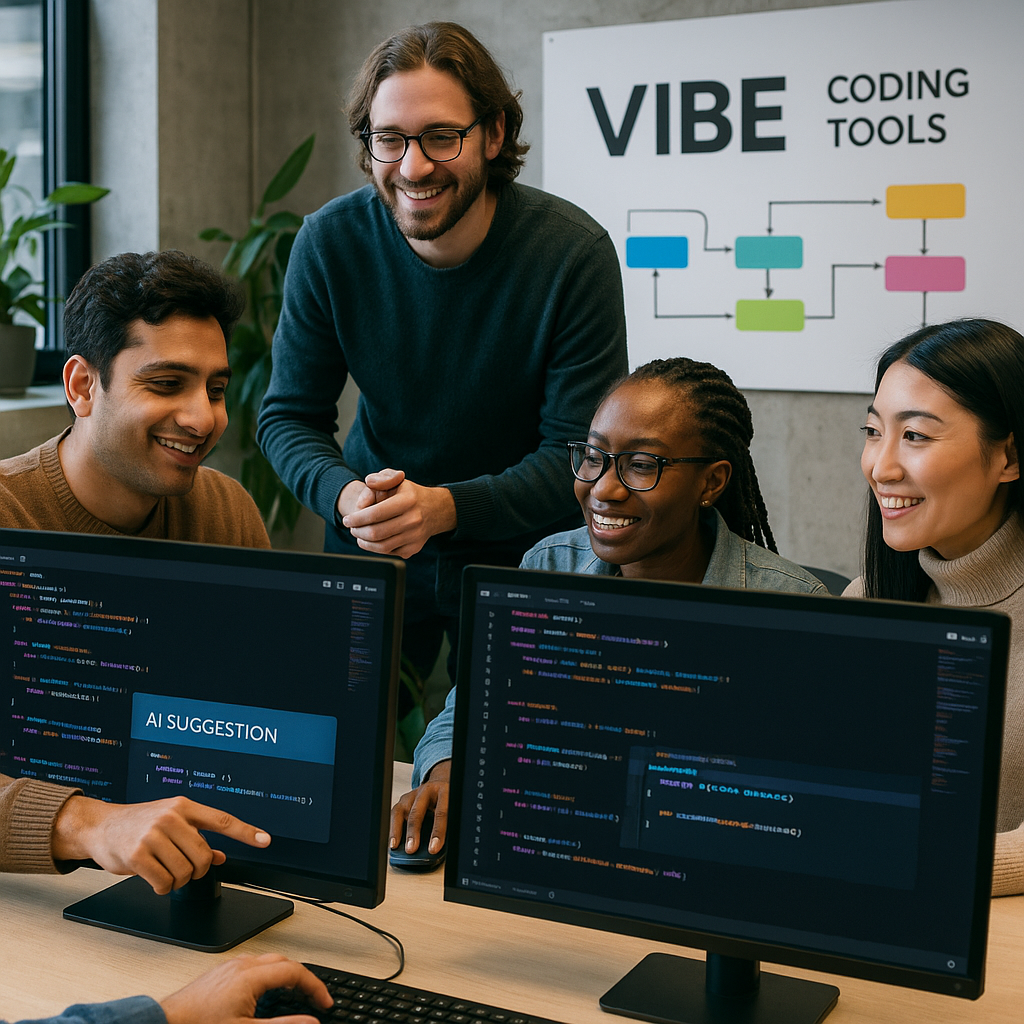Vibe Coding Tools — October 2025 Deep Dive

What “Vibe Coding” Really Means — and Why It’s More Than Hype
The term vibe coding started trending early 2025, thanks to Andrej Karpathy’s posts. The idea is simple (and radical): instead of typing code line by line, you describe what you want in natural language — and an AI writes the working code for you. You focus on intent, not syntax.
Critics point out that this flips the relationship between developer and code. In classic programming, you understand the code; in vibe coding, you trust the code. You become more like a conductor, less like a craftsman.
In practice, though, most people use vibe coding as an assistant — not full automation. You still read, tweak, and guide the AI. But the mindset shift is real.
The Tools That Define the Space Right Now
Here’s my breakdown of the tools everyone’s experimenting with in October 2025 — divided by use case.
| Tool | What It Does | Strengths | Weaknesses |
|---|---|---|---|
| Cursor | AI-first code editor (think VS Code on steroids): completion, refactoring, context help | Great UX, “pair programming” feel, new Bugbot for auto-debugging | Sometimes hallucinates logic that doesn’t match your architecture |
| Windsurf | Fork of VS Code, deeper AI integration, elegant navigation | Smoother UX than Cursor; strong focus on context | Suffers from the same “architecture ignorance” in large projects |
| v0 by Vercel | Generates React / Tailwind UI components from natural language | Perfect for fast interface prototyping | Limited to UI; backend logic stays on you |
| Bolt.new | Full-stack app generator — “from prompt to deploy” | Great for MVPs and quick PoCs | Struggles with scaling, architecture, performance |
| Lovable | Conversational app builder (chat + visual output) | Great for non-coders and designers | Hides too much logic, difficult to customize |
| Replit + AI Agents | Cloud IDE with instant deploy & AI assistants | Excellent for collaboration and teaching | Harder to fine-tune; dependency black box |
| Sweep | Turns GitHub issues into pull requests | Handy for “describe → implement” workflows | Can misinterpret style or repo conventions |
| Copilot Workspace / Chat | Task-level Copilot — generates PRs from issues | Great for integrated workflows | Still limited by Copilot’s core models |
| Claude Code | Chat-/CLI-driven coding, minimal UI | Great for terminal-first devs | No visual overview of big projects |
What Hurts — and What I’ve Learned the Hard Way
After months of building real features with these tools, a few patterns are crystal clear:
-
The triple gap: intent → code → result
The model often assumes things you didn’t mean. To fix that, I now break tasks into micro-steps and verify after each generation. -
The invisible technical debt
AI-generated scaffolds look neat but age badly. When you later add complex logic, everything starts wobbling. -
Security and stability gaps
Models still “forget” basic security patterns — validation, error handling, SQL injection checks. Always run static analysis and audits. -
Developers losing code literacy
I’ve seen juniors who “vibe-coded” full features but couldn’t debug them afterward — because they never actually read the code. -
Speed vs. maintainability
You can get a working prototype in hours, but maintaining it? That’s where it hurts. Once the project passes a certain size, AI tools lose their mental map of the architecture.
Where This Is Heading — and What to Focus On
If you’re serious about integrating vibe coding into your workflow, look here:
- Tools that can self-verify their output — generate, test, and fix automatically.
- Integrations with CI/CD pipelines and static analyzers to catch errors before prod.
- A hybrid approach: prototype with vibe coding, then hand-polish for production.
- Modular architectures that isolate “safe-to-generate” parts from core business logic.
- Research benchmarks: FeatBench (arXiv 2025) shows current agents succeed only ~30 % of the time at real “implement this feature” tasks.
- Human-factors studies like “Good Vibrations?” — analyzing how developers build trust, when they hand control back, and how they co-create with AI.
My Bottom Line
Vibe coding tools in 2025 are powerful accelerators for prototyping and small-to-medium projects — but they’re nowhere near replacing thoughtful architecture, security, or long-term maintainability.
If you want to move fast, vibe coding can get you 80% of the way there. Just make sure you know how to own the last 20%.